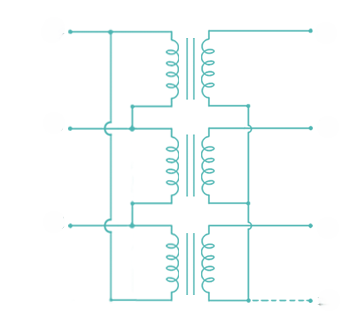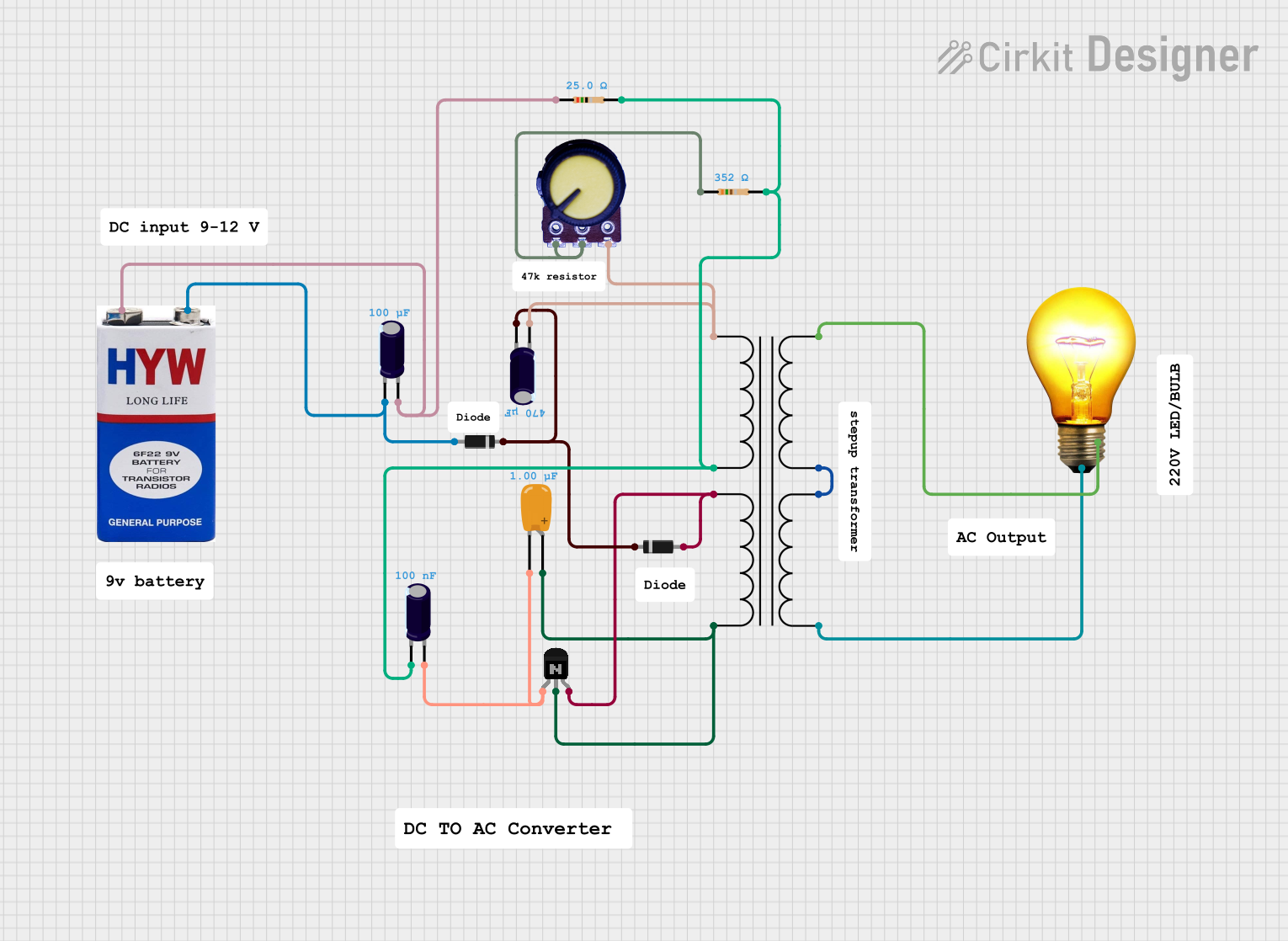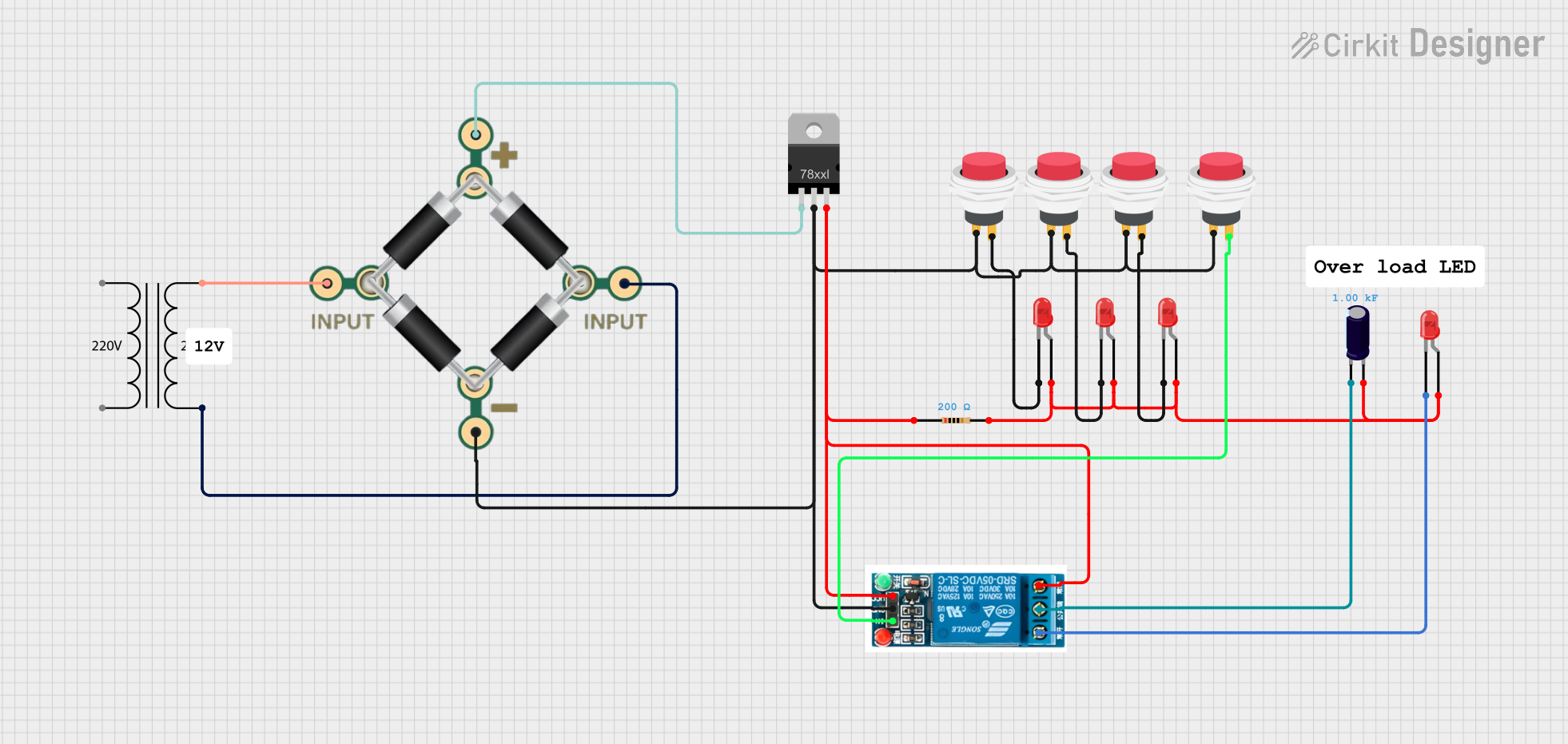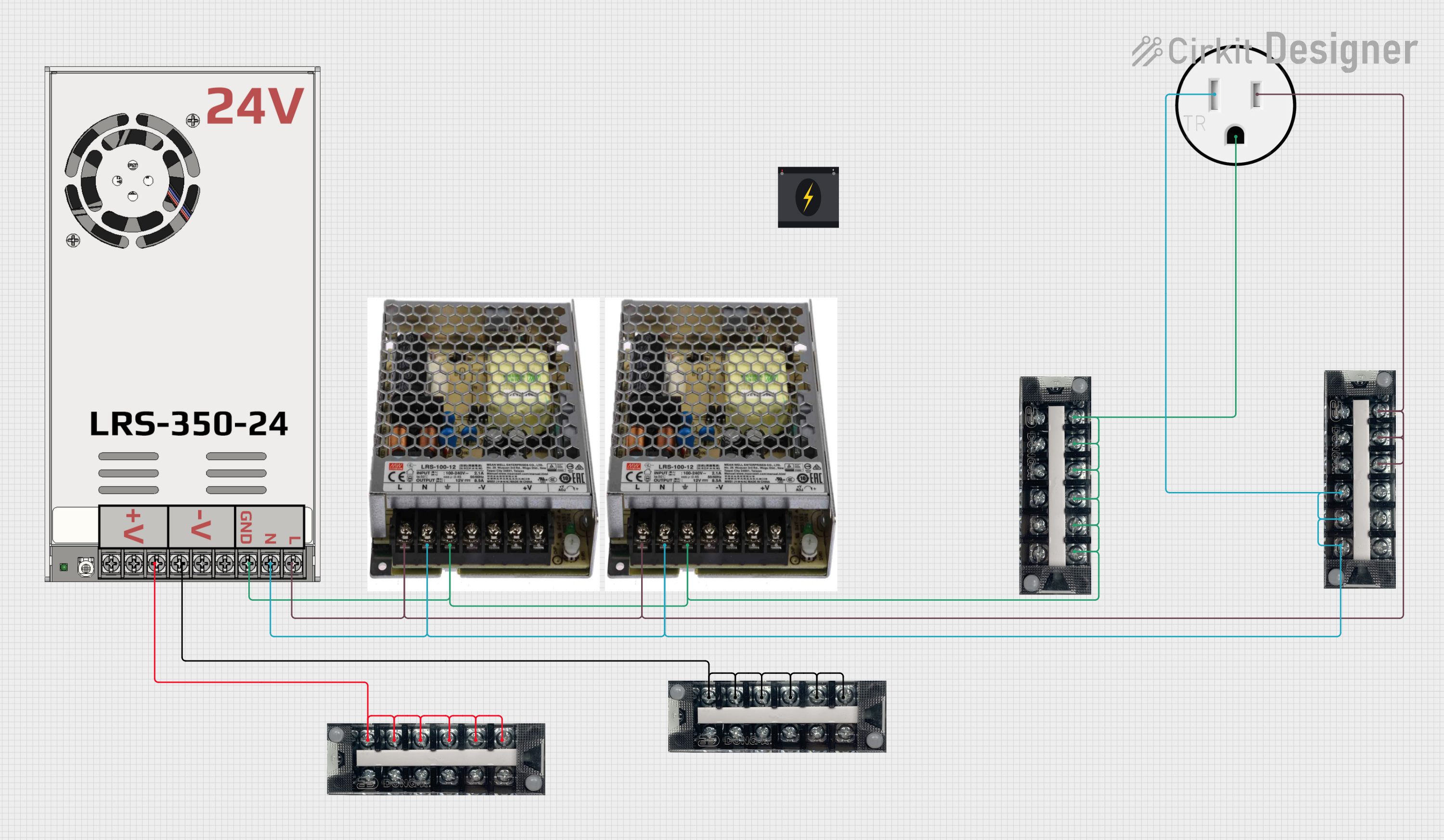
How to Use Delta-Star Transformer: Examples, Pinouts, and Specs

 Design with Delta-Star Transformer in Cirkit Designer
Design with Delta-Star Transformer in Cirkit DesignerIntroduction
A Delta-Star Transformer is an essential electrical component used in three-phase power systems. It serves to connect a three-phase source configured in a delta arrangement to a three-phase load configured in a star (or wye) arrangement. This type of transformer is pivotal in industrial settings for voltage transformation, typically to step up (increase) or step down (decrease) voltages in power distribution networks. It ensures the compatibility of power generation and consumption devices by matching their voltage requirements.
Explore Projects Built with Delta-Star Transformer

 Open Project in Cirkit Designer
Open Project in Cirkit Designer
 Open Project in Cirkit Designer
Open Project in Cirkit Designer
 Open Project in Cirkit Designer
Open Project in Cirkit Designer
 Open Project in Cirkit Designer
Open Project in Cirkit DesignerExplore Projects Built with Delta-Star Transformer

 Open Project in Cirkit Designer
Open Project in Cirkit Designer
 Open Project in Cirkit Designer
Open Project in Cirkit Designer
 Open Project in Cirkit Designer
Open Project in Cirkit Designer
 Open Project in Cirkit Designer
Open Project in Cirkit DesignerCommon Applications and Use Cases
- Industrial power distribution
- Electrical substations
- Motor control applications
- Power grid voltage regulation
Technical Specifications
Key Technical Details
- Rated Power (VA): Depends on specific model and application
- Primary Voltage (Delta side): Varies (e.g., 240V, 480V)
- Secondary Voltage (Star side): Varies (e.g., 120/208V, 277/480V)
- Frequency: 50/60 Hz
- Phase: Three-phase
- Insulation Class: Specified by manufacturer (e.g., Class A, B, F, H)
- Cooling Type: ONAN (Oil Natural Air Natural), ANAN (Air Natural Air Natural), etc.
- Impedance: Specified by manufacturer
Pin Configuration and Descriptions
| Pin (Terminal) | Description |
|---|---|
| H1, H2, H3 | Primary (Delta) side terminals |
| X1, X2, X3 | Secondary (Star) side terminals |
| X0, N | Neutral terminal (Star side) |
| Ground | Grounding terminal |
Usage Instructions
How to Use the Component in a Circuit
- Connection: Connect the primary side terminals (H1, H2, H3) to the three-phase delta-configured power source. The secondary side terminals (X1, X2, X3) should be connected to the star-configured load. The neutral terminal (X0, N) is connected to the system neutral if required.
- Grounding: Ensure the transformer is properly grounded to prevent electrical shock and maintain safety.
- Voltage Matching: Verify that the transformer's rated voltages match the source and load voltages.
Important Considerations and Best Practices
- Overloading: Avoid exceeding the transformer's rated power and current to prevent overheating and potential failure.
- Cooling: Ensure adequate cooling and ventilation around the transformer.
- Maintenance: Regularly inspect and maintain the transformer according to the manufacturer's guidelines.
- Safety: Always follow local electrical codes and standards for installation and operation.
Troubleshooting and FAQs
Common Issues Users Might Face
- Overheating: Caused by overloading or poor ventilation.
- Voltage Drop: Excessive load or incorrect connections can lead to voltage drops.
- Noise: Loose connections or core laminations can result in humming or buzzing sounds.
Solutions and Tips for Troubleshooting
- Overheating: Check the load and ensure it does not exceed the transformer's rating. Improve cooling and airflow.
- Voltage Drop: Verify connections and load levels. Ensure that the transformer is correctly sized for the application.
- Noise: Tighten any loose connections and inspect the core for lamination issues.
FAQs
- Q: Can a Delta-Star Transformer be used to convert single-phase to three-phase?
- A: No, it is designed for three-phase systems only.
- Q: What is the purpose of the neutral terminal in a Delta-Star Transformer?
- A: The neutral terminal provides a return path for unbalanced currents in the star-connected load side.
Code Example for Arduino UNO (Hypothetical)
Since a Delta-Star Transformer is not directly interfaced with microcontrollers like an Arduino UNO, there is no relevant code example for this component. However, an Arduino could be used to monitor the output of sensors attached to the transformer, such as temperature or current sensors, to ensure safe operation.
// Hypothetical example: Reading a current sensor on the secondary side of the transformer
#include <Wire.h>
#include <Adafruit_INA219.h>
Adafruit_INA219 ina219;
void setup() {
Serial.begin(9600);
if (!ina219.begin()) {
Serial.println("Failed to find INA219 chip");
while (1) { delay(10); }
}
ina219.setCalibration_16V_400mA();
}
void loop() {
float current_mA = ina219.getCurrent_mA(); // get the current in mA
Serial.print("Current: ");
Serial.print(current_mA);
Serial.println(" mA");
delay(1000);
}
Note: The above code is for illustrative purposes only and does not directly interact with a Delta-Star Transformer. It assumes the use of an INA219 current sensor to monitor the current on the secondary side of the transformer.
Remember to always consult the specific datasheet and manufacturer's documentation for the exact specifications and instructions for your Delta-Star Transformer model.